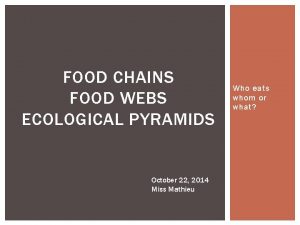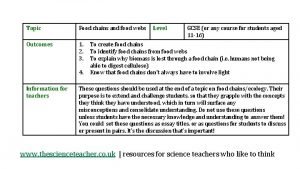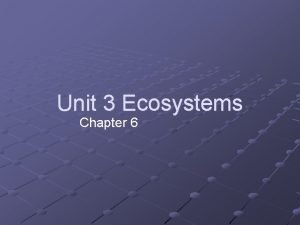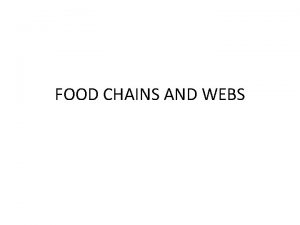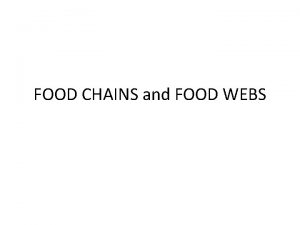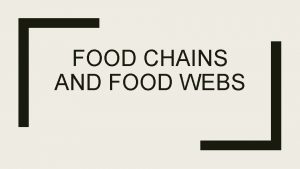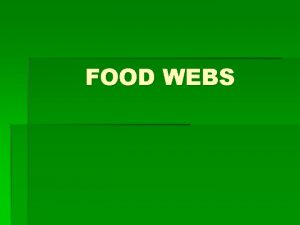Food Chains Notes A food chain is a







- Slides: 7

Food Chains Notes

A food chain is a model that shows how energy is passed, in the form of food, from one organism to another. The arrows between the organisms show the direction of energy flow. The organisms in a food chain can be producers, consumers, or decomposers.

1. Producers are green plants capable of making their own food using energy from the sun in a process called photosynthesis. 2. Consumers are animals that cannot make their own food. They get their energy from other plants and animals. A food chain can have as many as three to four consumers.

a) First level consumers feed directly on plants- Herbivores; examples of this would be a mouse, deer, or a rabbit

b) Second level consumers feed on first level consumers-Carnivores; an example of this would be a rattlesnake that eats the mouse.

c) Third level consumers feed on second level consumers-Carnivores ; an example of this would be a hawk eating the rattlesnake. d) Scavengers: Feed on organisms that have recently died. (Vulture) Add under third level consumers

Decomposers are also unable to make their own food. Bacteria and fungi are decomposers. They break down waste products and dead organisms for food. These broken down materials are returned to the soil to be recycled and used by plants again. An example of this would be a fungus growing on a log. Although decomposers are very important to ecosystems, they are usually not shown on the food chain.



